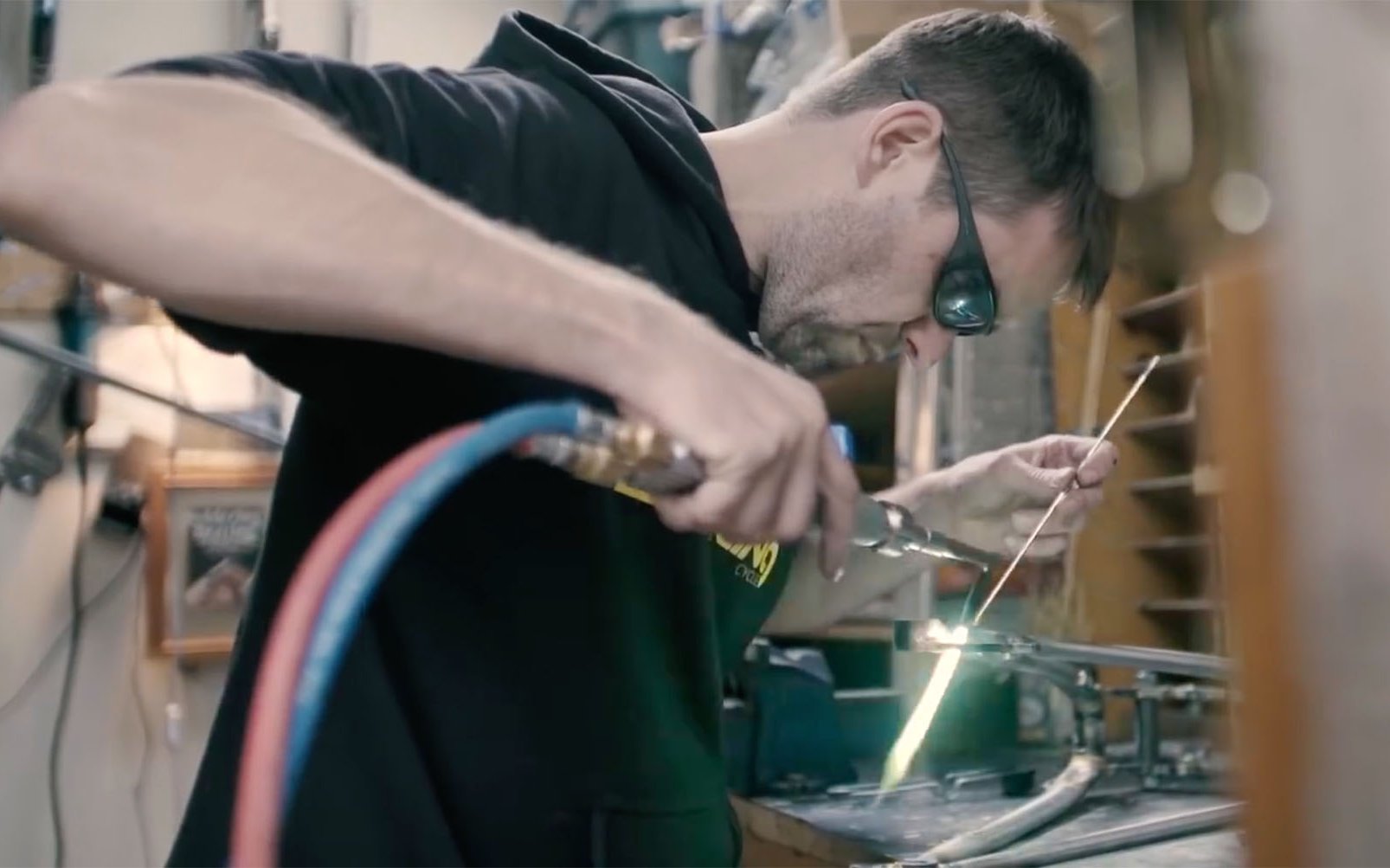
Interview
An Aerospace Perspective on Carbon
It seems that carbon fibre has begun to make sense to mountain bikers. And I've always been drawn by its charms. It's used gratuitously on F1 cars and on the most sophisticated aircraft in the world, so it must be the Best. Stuff. Ever. It can be made incredibly light, and yet we are told it can also be laid up to be stiffer than aluminum or steel. And we hear the fatigue life of carbon can be virtually infinite and certainly longer than steel, aluminum or even titanium when done right. And things seem to be getting better. Epoxies and resins are improving and processes are becoming more sophisticated and streamlined so the internal structures no longer looks like backyard fibreglass repairs. The price however, continues to grow with the technology.
Does riding a carbon bike churn out more endorphins? Can we get more rad on carbon? Will carbon frames trim Strava times? Will composites attract potential mates? Marketing tells us yes. And marketing never, ever lies.
One of the most compelling elements of frames laid up with pre-preg is how damned beautiful they look. Velvety lines convey strength and efficiency while inducing irrational lust, but what about the value proposition? As we continue to work on our back to back Knolly Al vs C evaluation, we thought it was appropriate to harness a potentially dissenting opinion on the merits of the other black gold.
Joe McEwan is the man behind Starling Cycles, makers of bespoke steel frames in Bristol, U.K. The Starling Murmur has impressed and surprised testers, including those at DIRT who called it one of their favourite bikes of 2017 saying, "we put it back to back with many of the carbon elite and it more than held its own." Joe didn't get his start in steel but in Aerospace (see below) and his deep experience with carbon comes from an entirely different realm. While his opinions aren't free of bias, they are infused with a healthy skepticism that counters the influence of large marketing budgets.*
Here's what he had to say.
*I don't doubt anything Joe told me, but there is certainly a perceived bias because Joe doesn't sell carbon bikes!
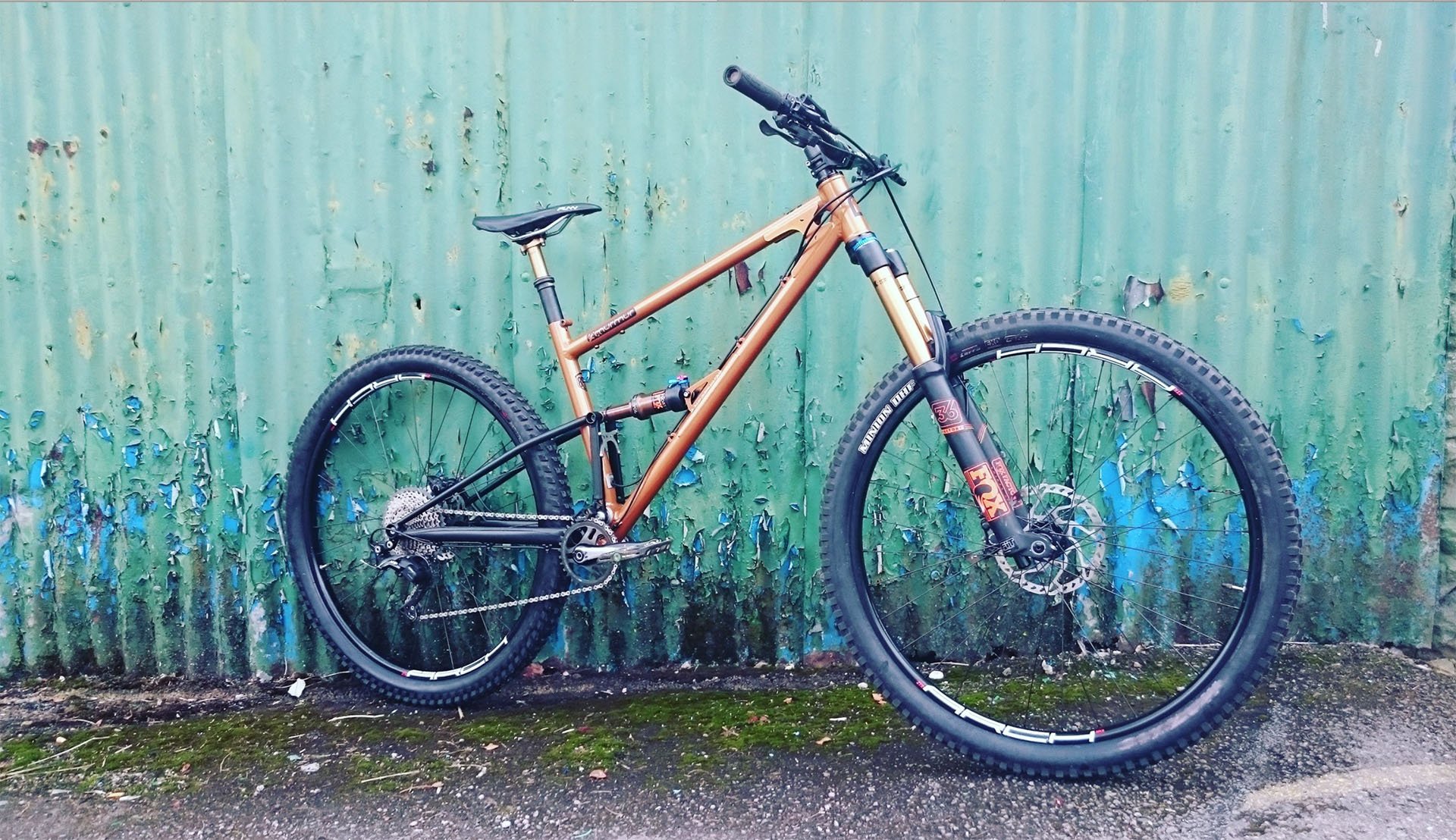
The Murmur exudes simplicity and durability, in an age of ramping complexity. Joe has a recommended head angle of 65º but that's up to you.
Cam McRae - Would you please tell me a little about your background and the sort of experience you have working with (analyzing etc.) materials like aluminum, chromoly steel and carbon?
Joe McEwen - Before Starling Cycles, I spent nearly 20 years (Since 1999) as a Stress Engineering for the Aerospace Industry. My job was to perform calculations/FEM analysis and occasionally testing to design and check aircraft components. I started as graduate, but progressed to Lead Stress roles and department heads.
Much of my time was spent working on new carbon composite materials; developing new analysis methods and technologies. I spent 4 years as technical head for a composite research department. However, I also did a large amount of aluminium analysis. But typically in aerospace you use industry agreed methods rather than analysing from first principles. I’ve only done limited steel analysis, mostly for bolts in aerospace. But the stress analysis of most homogenous materials is similar. Composites are a different matter!
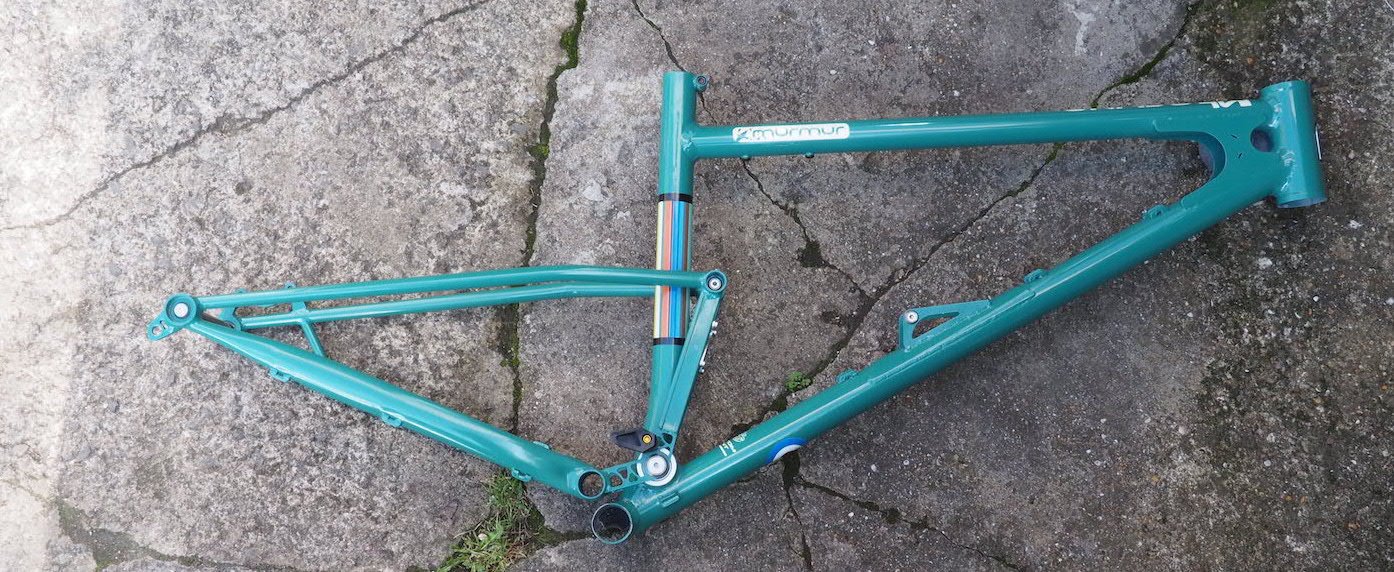
It's all up to you. This Murmur was inspired by a customer's late father's Mod phase. 7 Pot Customs applied the Vespa green and the accents hearkening to the age of Quadrophenia.
You have chosen to build bikes out of steel despite your experiecne with composites. Do you think there is a case at all for making carbon mountain bikes?
Yes, my biggest concern with carbon fibre is the damage tolerance. If sufficient damage tolerant capability can be demonstrated, then yes composites can potentially make good bikes. As with anything, correct design is much more important than what material is used. Although material choice is a key part of the design process. It should be noted that even aerospace has been known to use composites for political and marketing reasons rather than engineering reasons.
Just a quick aside on damage tolerance. Carbon fibre is prone to something called BVID (Barely Visible Impact Damage), although this may be an aerospace-only terminology. Essentially, a carbon fibre laminated structure (how most bikes and aeroplanes are constructed) can sustain a lot of internal damage from an impact. Typically the lamina (layers) are caused to separate at the soft epoxy matrix. The issue is that there might be significant internal damage, but only a tiny scratch on the outside. I.e. you do not know the damage is there.
There are solutions in the form of matrix material composition or special design features, but I’m not familiar with what is done in the bike industry. Conversely, the multiple fibres in carbon composites are considered a damage tolerant structure, the fibres do hang together somewhat after failure.
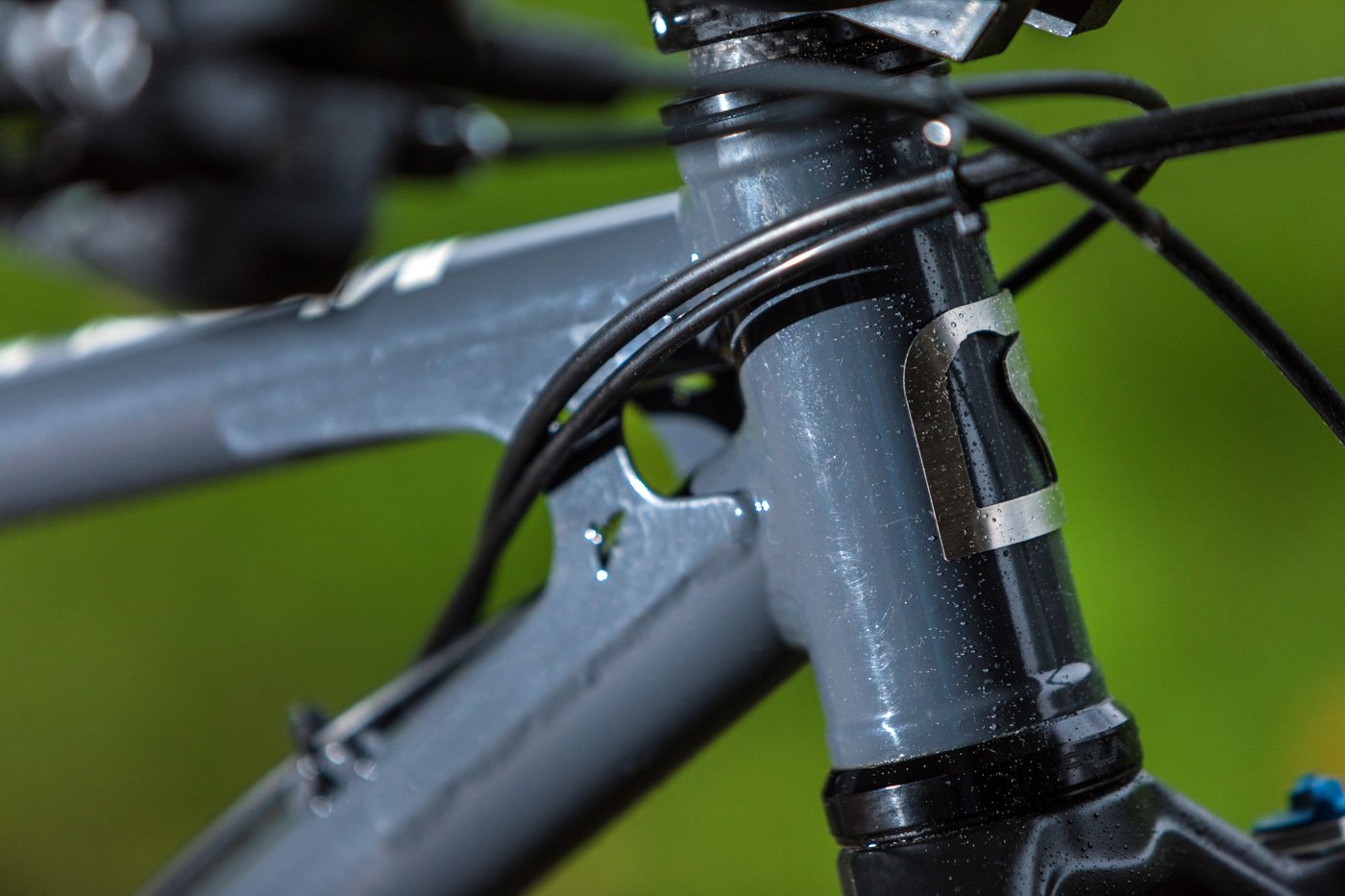
You wouldn't say the Murmur and other Starling frames are about refinement, but they exude charm and utility.
Do you think there is a company in the industry who is doing it well?
Yes, the big companies with sufficient resources and experience should be able to build good composite bikes. A good friend of mine, who I very much respect, spent some time working for Specialized on behalf of McLaren to design the Venge road bike. So they are definitely getting the right people.
How important do you think frame weight is in mountain bike performance both uphill and down all other things being equal?
Weight is obviously important going up. More weight means more potential energy needs to be put into the system as you gain height. Going down is more complicated! Let’s consider the system as a whole (bike plus rider) to get some ideas. On some tracks, a big system (Peaty, Rennie, Moir, Gutierrez) will do better, on others a small system (Hart, Brosnan) will do better.
A higher system weight means there is more kinetic energy in the system. So a small bump will take a lesser proportion of the energy from the system and the rider will carry more speed through rough sections. A lower system weight allows quicker acceleration, braking and direction changes.
But there seems to be a growing set of experience from E-Bikes that show even with motors turned off, they are quicker than traditional bikes. The additional weight seems to allow the suspension to work better and more grip is maintained.
We have not answered the question yet of whether weight is good going down!
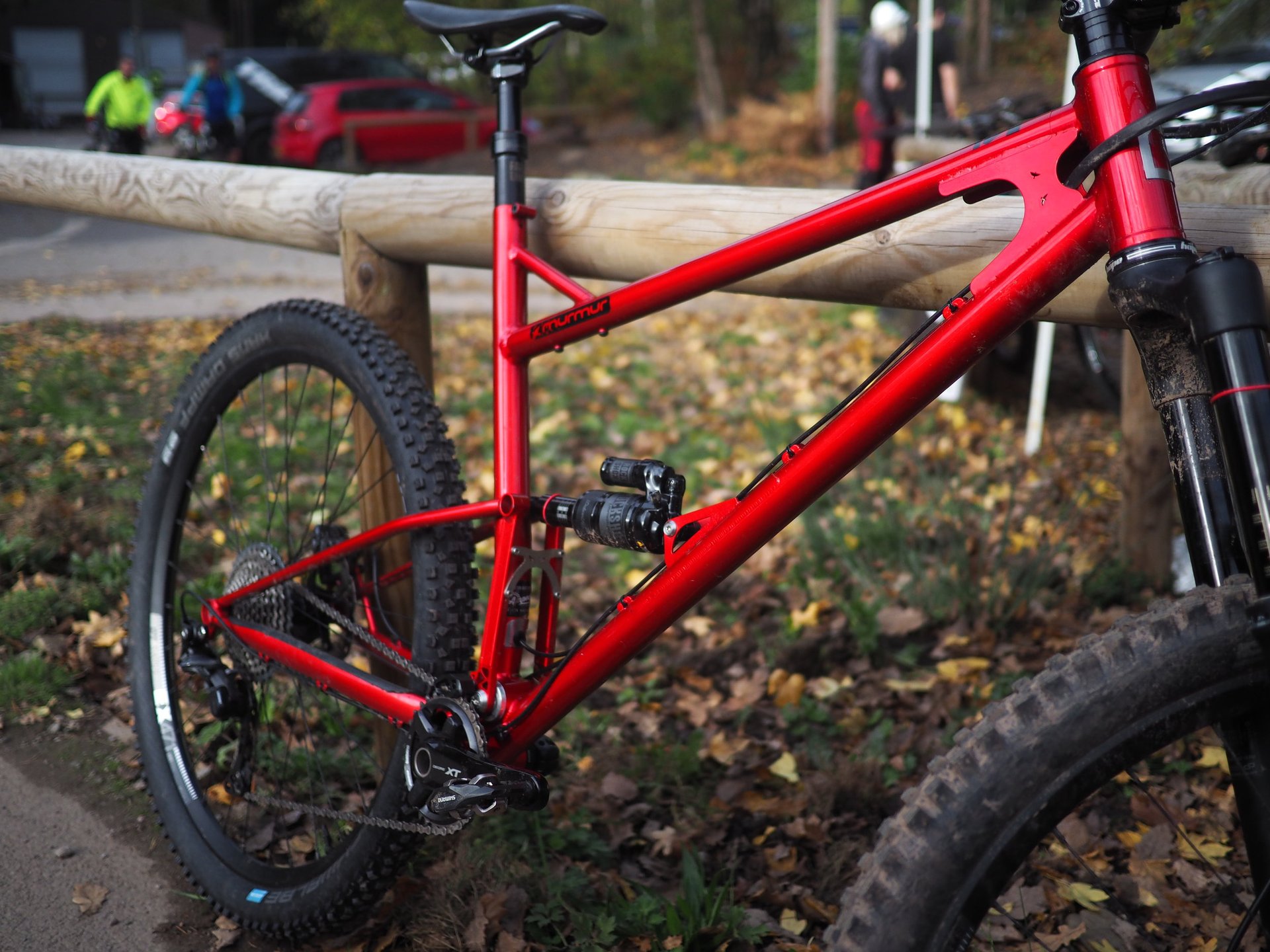
Every Starling is a little different.
You mentioned earlier that some frames appear to be just a carbon version of the original design. What are the limitations of that assuming that is the case?
In aerospace we used the term ‘black metal,’ where we analysed, or even designed composite components in the same way it had always been done for aluminium. Early on at my time at Airbus I spent some time looking at old drawings of the De Havilland Mosquito, an aircraft made from plywood. This is a much better starting point to design a composite aircraft, rather than the contemporary aluminium aeroplanes.
The same applies to bikes, why should a carbon bike look anything like an aluminium bike. The component interfaces are another weak point of carbon bikes. Metallic threaded inserts are notoriously hard to get to stay in place. A different solution here is needed.
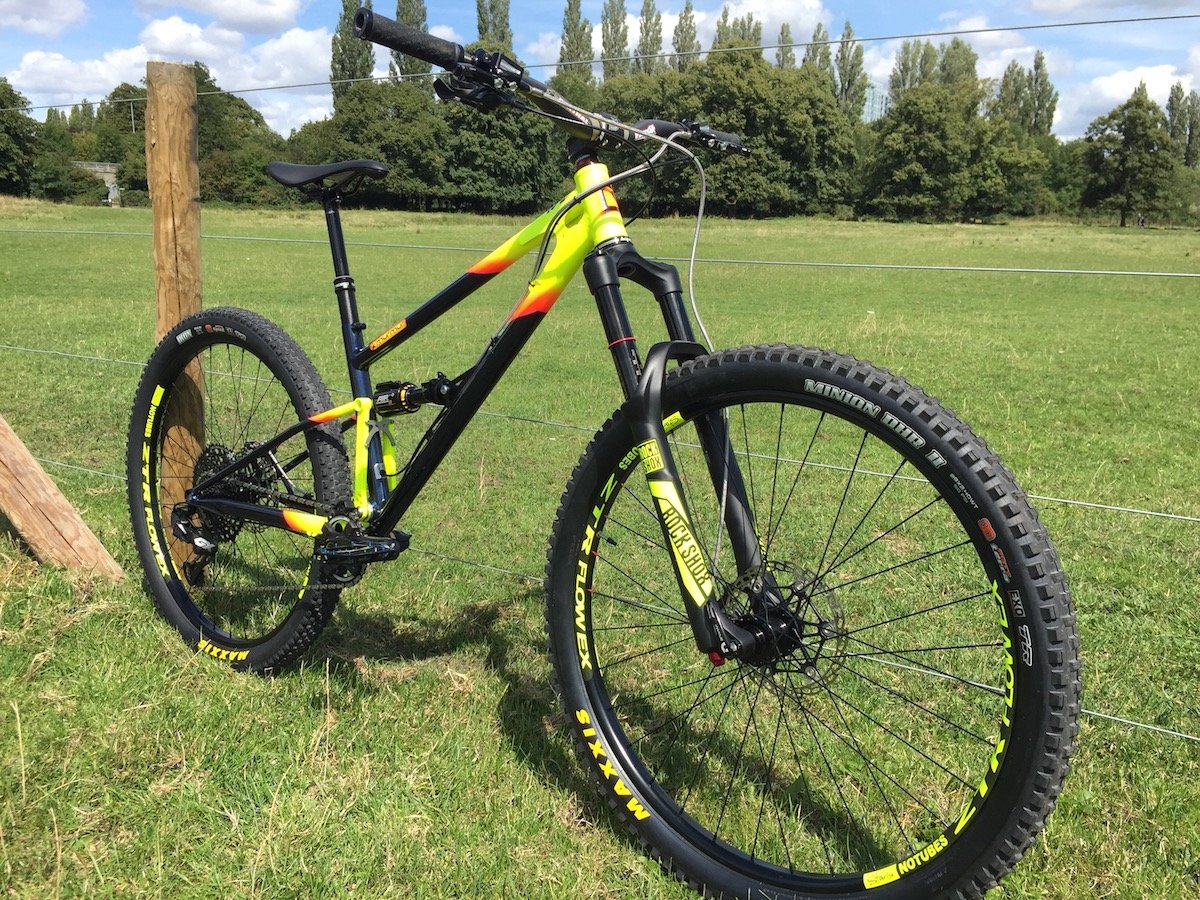
Another custom paint job. This one isn't to my taste, but it isn't supposed to be.
You have chosen to use steel to build your bikes. Why did you disqualify carbon and aluminum?
Primarily I used steel as it is the easiest material to work with in your shed. But I have always had steel bikes; hardtails and some DH bikes. I liked the way they rode, so was happy with this as my material of choice. Maybe a political rather than engineering choice!
I’m yet to define what gives steel bikes the certain ride quality, but I think it’s a function of two things. Firstly, the density and stiffness of steel means it builds best (strength and weight) using thinner diameter tubes. These thinner diameter tubes are more flexible than large diameter aluminium or carbon tubes. Secondly, I think the dynamic behaviour of the material after it has bent may be a factor. But I have minimal evidence for this.

Joe's boss at Airbus encouraged him to pursue his passion for building frames. Screencap courtesy Aspect Media (see full video below)
We've all heard stories of cast off frames being tossed into the sea, not to mention toxic working conditions for those in manufacturing overseas. Are these avoidable? Is it possible to manufacture using carbon in a way that is sustainable either in the west of in Asia?
The environmental question is massively complicated! Unless you can follow every step of the manufacturing process for everything involved, even down the amount of rags that they use in the factory that makes the ships that move the materials around, you will never get an answer. How we make our bikes is the least of our problems, there a lot more shit stuff to solve first.
Using a thermoplastic (i.e. it melts, rather than thermoset which is chemically set) matrix can allow carbon fibre to be recycled.

The face of a man pursuing his passion. Screencap courtesy Aspect Media (see full video below)
What are the long term performance prospects of each material? Does carbon, or the epoxy used to hold it together rather, have longevity issues? Where does that leave steel and aluminum?
As part of the design process you need to consider long term performance. Steel rusts, aluminium suffers from fatigue (often at welds or bolt holes), carbon is damaged and also retains moisture which reduces its strength (a big issue in aerospace).
All can be solved with correct design solutions.
Are there areas on a bike where you think carbon is a good choice?
See all of above, yes if used properly. But in most cases it is primarily used because of the perceived benefits, rather than the real requirements.
I run carbon bars and wheels, but only because I have been given them from free. If it was my money, alloy wheels and ti bars are good.
Have you ridden a carbon-framed MTB that you felt performed well? If so was it in spite of or because of the material choice in your view?
I have never ridden a carbon frame in anger! I don’t have the money or access!
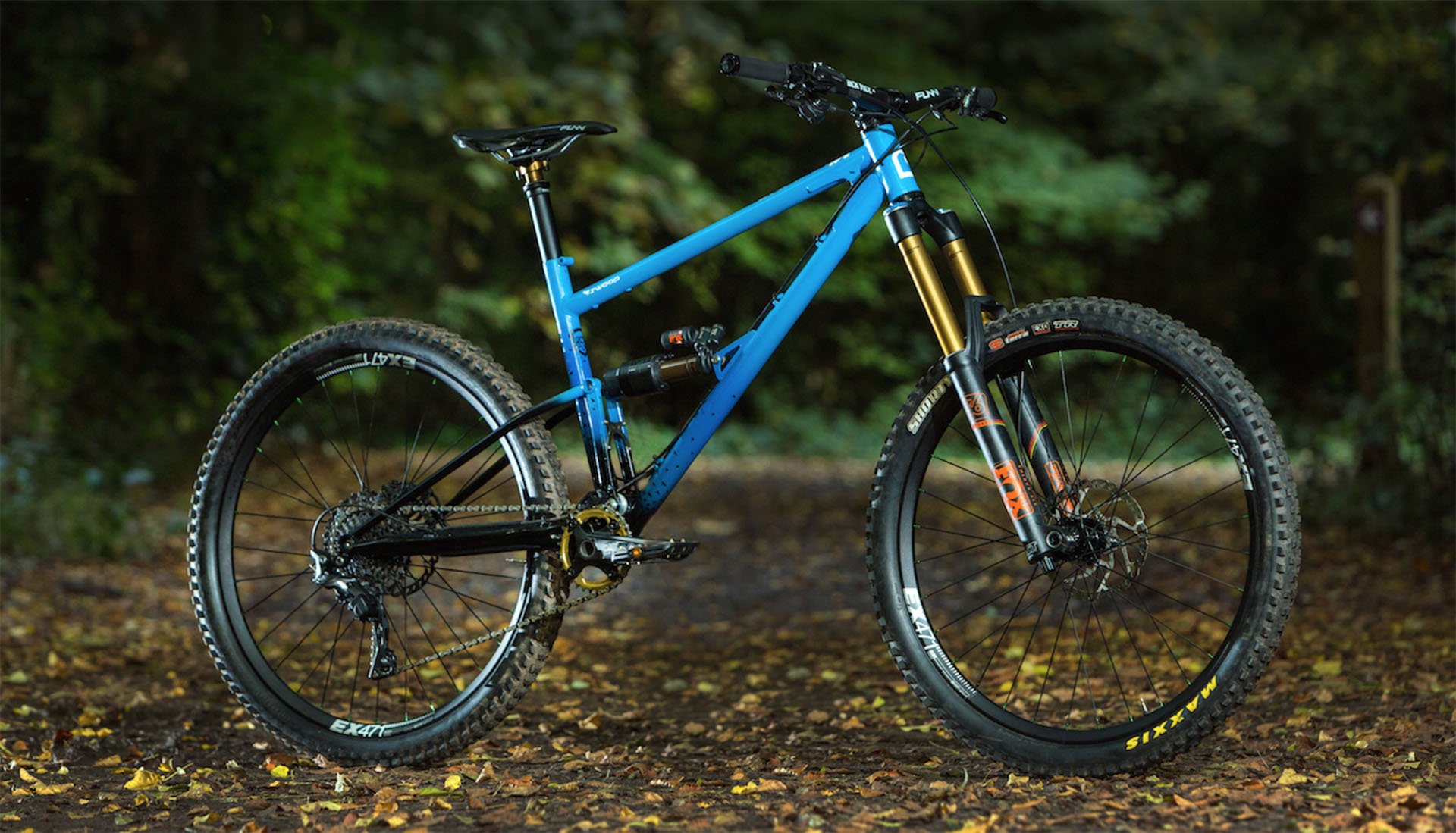
27.5 Ain't dead? The Swoop is the Murmur's little bro. The third model, the Beady Little Eye is even more paired down.
Missing in virtually all the informed opinions and suppositions about the merits of carbon versus metals is real data, aside from weight. Smart companies track their reported failure rates from both impacts and manufacturing defects, but that info isn't made public. And information about waste, worker safety and other environmental concerns is even more impenetrable. Consumers are left to corral marketing-free information wherever possible; anecdotally from bike shop employees (who often have the best information despite being subject to bias), internet comments and from riders we meet on the trail. And hopefully those of us in the media help on occasion as well.
While many of us have been drawn by shiny carbon things, the allure of metal is starting to regain its pull. Aluminum frames continue to improve as new processes for forming and butting tubes allow structures that begin to approach the design freedom carbon allows. And steel has an allure and feel that perhaps only titanium can compete with. We are fortunate to live in a time when tiny concerns like Starling Cycles, making custom steel duallies, can coexist with huge bike brands. While we are indeed spoiled for choice, the process of selecting the perfect bike, and the right frame material, has never been more difficult.*
*See Uncle Dave for some help there







Comments
[user profile deleted]
6 years, 2 months ago
This comment has been removed.
Perry Schebel
6 years, 2 months ago
agreed. swarf cycles (another small UK shop led by a dude with similar nerdy pedigree) is doing cool work in a similar vein:
Reply
Dave Smith
6 years, 2 months ago
That Swarf is a fine looking machine.
Reply
AJ Barlas
6 years, 2 months ago
Words from mouth, you done took.
Reply
[user profile deleted]
6 years, 2 months ago
This comment has been removed.
Perry Schebel
6 years, 2 months ago
the fs frames are proto currently. check out their fb for more images of the fs frames built up.
Reply
cyclotoine
6 years, 2 months ago
Cool bikes, I'd like to learn more about them. I still ride alloy frames because they are cheaper and I don't have to worry about unseen damage. They can take a beating. I have many steel frames including my "modern" road bike. The only thing I don't like is the brazed on seat binder. Just use an alloy collar! They are so much better. I have ground off those pinch bolt ears on other bikes and replaced with an alloy collar for more even clamping, but maybe if they are done with precision by a skilled hand they are okay.
Reply
phile
6 years, 2 months ago
Regarding McEwan's potential bias against carbon (because Starling doesn't offer carbon frames): McEwan claims that all 3 materials (al/carbon/steel) can be executed well, but that steel is the easiest for him to build in his shed. That's a deeply biased statement--he has clearly never attempted to build a carbon bike in his shed. Maybe it's easier than he thinks. Until he tries it, I refuse to listen to any of his bold claims about which material is easiest to work with in his shed. (Interesting guy and a fun read; nice one.)
Reply
Pete Roggeman
6 years, 2 months ago
Uh, what?
Reply
Lowcard
6 years, 2 months ago
Joe is an awesome guy, and steel is quite a good material in which to construct a frame out of. Carbon frame building would be, by a huge margin, the most labour intensive material to build anything out of (no robots, all by hand), so its not something you do in your shed. Maybe a little bias here? But either way he's killing it.
Reply
phile
6 years, 2 months ago
yeah, just thought it was funny that the intro was careful to point out that McEwan had a potential bias, but then the interview that followed was the most even-handed, dismissive view of bike materials I've ever read--"they're all fine, who cares."
Reply
awesterner
6 years, 2 months ago
Umm he's pretty objective basing his arguments on his research in Carbon. As an Aviation guy first starting out with the absolute shite job of doing composite repairs, BVID is a very real thing. Remember that Santa Cruz video where they were smashing that Nomad with a hammer? I would have liked to see the inside of that downtime after they cut it in half.
Reply
Rob Gretchen
6 years, 2 months ago
Steel is real!! I for one am a bit blase of ubiquitous carbon bikes... No question they ride great and are visually appealing but steel has soul.
Reply
Lowcard
6 years, 2 months ago
Did you actually just say that steel has soul?
Reply
Rob Gretchen
6 years, 2 months ago
Yes I did... had an Xprezo Adhoc back a few years ago and loved that bike... now my main ride is a Chromag Rootdown BA... full disclosure I own a bike shop and can ride any material I choose... I choose steel.
Reply
Lowcard
6 years, 2 months ago
Sweet! I had 3 Xprezos, 4 Balfas, and an Appalache. I don't recall any of them having a soul, but to each their own I guess! Steel does ride nice, but carbon can be engineered to ride exactly the same. I love steel bikes too.
Reply
Rob Gretchen
6 years, 2 months ago
Maybe the welders had soul? LOL... Its just a throwback to a simpler time of making bikes... beauty is in the eye of the beholder...
Reply
fartymarty
6 years, 2 months ago
I'm also a big fan of the clean straight lines of steel.
I think custom steel bikes like this definitely have soul, probably from the blood sweat and tears of the maker.
Tom1111
6 years, 2 months ago
I think times are due for a change. The price of bikes are getting silly. I would like to see more companies offer alu frame with high spec components.
Quite a few companies offer alu frames but only with budget components and the only way to get better parts is to go for the carbon option.
If I had the money for a carbon frame I would prefer to buy a custom steel frame which are usually a similar price.
Oh I like the term “system” to describe a bike and rider.
Reply
Peter Leeds
6 years, 2 months ago
This is not the first time I have seen a full suspension bike in steel. But for a good perspective on carbon, look up Foes' website and get Brent's opinion. I have owned 2 Foes' for a combined total of 12 years and they were superbly built, dead arrow straight, and all aluminum.
I think a lot of companies are going carbon because the perception is that it is better, and it is easy to sway people to believe it is expensive (thus, charge accordingly) when in fact, once you have the mould set up it is not nearly as involved as they would have you believe. The amount of man hours in welding one of my old Foes' (one of which now hangs up in my shop) is considerable and done by an expert. Real proof of cost. Personally I think a lot of companies are going carbon to not only offer something different (to help sales) but because it is easy to attach a high price to it and say "but it is worth it". I looked at a TOTL Rocky Carbon bike recently and it was $14999. The parts spec was top notch, but when you do the math on the parts.....I can't see the value.
Reply
Andy Eunson
6 years, 2 months ago
The ride quality of carbon is supposed to be that it is stiff where you want it stiff and compliant where that is desired. I think in all materials it has always been thought that stiffer is better for bike frames. But is that true? I’ve read that steel is not ideal for suspension because it is too flexible. I also read something about Formula GP motorcycles being made stiffer and stiffer until riders lap times were slower because the frames were too stiff. So frame designers built in some flex again to make the motorcycles faster. If you watch some slo mo videos of mountain bike riders you will see back wheels flexing all over the place on some frames, less for others. So is “steel is too flexible” marketing crap? Certainly a bike can flex too much. I had a steel road bike where I could make the chain rub on both sides of the front derailleur. My current carbon road bike descends way better than any old steel bike I have had. Handling is just that much more precise.
A few years back I tried an aluminum hard tail 29er to see if I’d like big wheels. I did. So I then went for a carbon hardtail with pretty much the same measurements. Wasn’t a lot of difference truthfully. Lighter for sure and I could feel that but they both had a good ride quality.
The long and short of it is, I think build quality and design are far more important that materials. Bikes like this I find intriguing.
Reply
Please log in to leave a comment.